There’s Prussian order in the hotel.
The information material in the room consists mostly
of strongly worded conditions how to use the hotel and what they do with the
processed data. In the restaurant is a sign on the coffee machine saying how
many minutes and seconds it takes to prepare one cup.
I don’t know if it is the initiative of the GPS or
is it necessary to drive to Gdansk through villages. In the mild morning light
the surroundings are picturesque and slightly wavy. Not many clear-cut areas
but when there’s one then it’s completely empty. No seed trees or reserves. Not
many other road users which is good for looking around. When a car appears in
the rear mirror then it is unexpected every time. The average fuel usage drops
to four liters per 100 km because a lot of the way can be driven without using
fuel at all.
I came to Poland with my car because ‘it’s just next
door’. On the last moment I found out that studded tires are forbidden in
Poland and had to buy un-studded ones for these three weeks. Actually I did not
have a special interest towards Poland
as such
but just wanted to see a few places that
happen to be in Poland.
I change Ukrainian pop for local radio. Not much
difference because Polish is actually Ukrainian written in Latin alphabet (a
joke!). Although my vocabulary consists mainly of sentences like ‘Big boys have
a new dog’ I still understand that some ladies are discussing fridges that have
20% discount and that the Minister of Health said that there’s no corona. At
the same time Polish government sends me an SMS with a link where to read more about
the virus. I also can read the signs along the road: smaczne ryby (tasty fish),
wolne pokoje (free rooms).
After a few hours the Polish wake up and start to
race. Luckily they don’t overtake as dangerously as Latvians and Lithuanians.
They also stop for pedestrians to cross the road and the bus to get out of the
bus stop. Motorway begins.
A stop in Gdansk because it somehow felt logical.
For stretching my feet and eating lunch. In Gdansk began WWI and Solidarity (Solidarność, the trade union that helped to end communism in Poland). Here are also
colorful facades and the biggest port crane in the world but I’m more
interested in Fahrenheit thermometer. It’s opposite the big fountain that
everybody is photographing. Daniel Fahrenheit grew up here. A lot of German
spoken on the streets, probably came to have a look at what’s left of Danzig.
From a small street I find lovely vegetable pancakes with a lot of caviar. On
the table smell real daffodils.
On next part of the route
a traffic light showing red has been installed after every 100 meters. All
Polish people have gathered around the traffic lights. It continues for about
50 kilometers. Then I reach the motorway. When signs start pointing towards
Berlin it gets dark. Darkness is suitable for road construction. Structures in
the middle of the road, flashing lights and rushing Polish is a confusing mixture.
This time only Polish is
spoken in the hotel (dwa noc; tak, tak, tylko śniadanie, nie obiad). The first target is
now here close by.
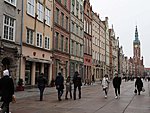
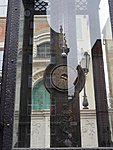
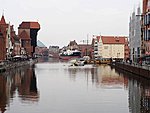
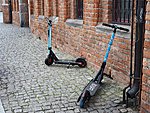

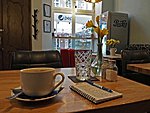

Add a comment